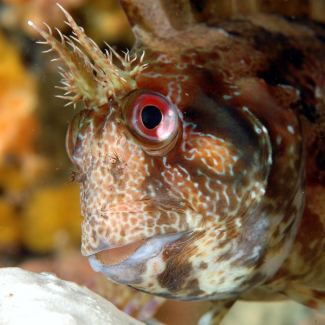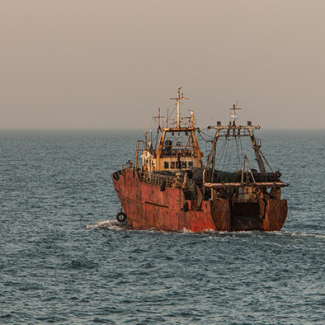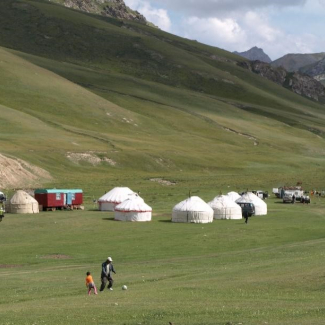
Heading to Barbados to investigate two unknowns in the climate equation
A major airborne and oceanographic mission off the Caribbean island of Barbados is preparing to study two major climate unknowns: trade wind cumulus clouds and mesoscale eddies in the ocean. This international campaign, initiated by researchers from the CNRS in France and the Max Planck Institute in Germany with their colleagues from Barbados, joined by teams from the US and the UK, will take place from 20 January to 20 February 2020 and will make use of numerous innovations in the areas of atmospheric and oceanic observation. The campaign should help to reduce uncertainties about the rate and extent of global warming in the future.
For the last forty years1 , climatologists have been grappling with a key parameter on which the extent of future global warming depends: the sensitivity of the climate system to CO2 increase in the atmosphere2 . However, they now know that the way in which clouds react to global warming lies at the heart of the problem.
In an attempt to get a clearer picture, the EUREC4A (Elucidating the role of clouds-circulation coupling in climate) international campaign, co-directed by Sandrine Bony of the CNRS and Bjorn Stevens of the Max Planck Institute, in partnership with David Farrell of the Caribbean Institute for Meteorology and Hydrology, will, for one month, focus on trade wind cumulus clouds off the coast of the Caribbean island of Barbados. These small fair-weather clouds are of great interest to climatologists: due to their widespread presence in the tropics, a slight change in their properties could have significant consequences for the climate. Will the coverage of these clouds, which have cooling properties, increase or decrease with global warming? Depending on the answer, warming would be either diminished or enhanced. In addition, the spatial organisation of these clouds can take on various patterns (see images). What controls these different arrangements? Do they play a role in the cooling properties of the clouds? Are they affected by global warming?
In order to better understand the physics of these clouds, the ways in which they form and the factors that affect their properties, the EUREC4A campaign will deploy five aircraft equipped with state-of-the-art instrumentation and innovative methods. In particular, the French ATR-423 will fly along the base of the clouds, combining radar and lidar measurements as well as numerous in situ measurements, in order to study their extent and properties (quantity of water, droplet size, internal motion, etc). At higher altitudes, the German aircraft will release ‘dropsondes’ to measure the vertical air speed on large scales. At the same time, the Barbados cloud observatory will characterize the atmosphere from the ground, while four research ships and a multitude of drones will study the interface between ocean and atmosphere.
For this is where another major source of uncertainty lies. The ocean is the main regulator of the world's climate and is especially turbulent in this region, with many small eddies (less than 100 km in diameter) stirring up water that is warmer than in surrounding areas. Researchers suspect that these eddies play a role in the flow of gases and energy between the ocean and the atmosphere, such as the capture of CO2 and heat by the ocean. These exchanges, which take place on small scales (from a few tens of metres to a few tens of kilometres), are poorly understood and only summarily represented in climate models. For the first time at these scales, flows of CO2 and heat, as well as friction at the ocean-atmosphere boundary, will be studied intensively thanks to the simultaneous use of four ships, instrumented buoys, underwater gliders and saildrones.
The new data obtained will be used to test our understanding of processes that are critical for the climate and its response to increasing CO2 emissions. They will also help researchers to assess the ability of numerical weather and climate prediction models to predict trade wind cumulus clouds and ocean-atmosphere exchanges. Finally, they will help improve satellite remote sensing of such processes.
The campaign, supported by the World Climate Research Programme, is key to addressing two of its scientific challenges (‘Clouds, circulation and climate sensitivity’ and ‘Planetary heat balance and ocean heat storage’). It benefits in particular from the ERC Advanced Grant awarded to Sandrine Bony, as well as European funding for the JPI Ocean & Climate coordinated by Sabrina Speich.
Over 30 institutions from 11 countries4 are taking part in the campaign. In France, 13 laboratories and structures of the CNRS and its partners are involved5 and will be sending around 100 people into the field.
To find out more, visit the campaign website: http://eurec4a.eu/

© Sandrine Bony, Laboratoire de météorologie dynamique (CNRS/ENS-PSL/École polytechnique/Sorbonne Université)

© NASA Worldview

© Jonathan Gula, Laboratoire d’océanographie physique et spatiale (CNRS/IRD/Ifremer/UBO), Brest.

Above, from left to right: the French ATR-42 research aircraft, the German Halo research aircraft, the American WP-3D research aircraft, the British Twin Otter research aircraft, and the Barbados RSS. Second line: the island of Barbados with its radar coverage, the Barbados Cloud Observatory, the PoldiRad radar and the CloudKite (a tethered balloon attached to a ship). Third line: the research vessels Atalante (France), Maria S Merian and Meteor (Germany), and Ron Brown (United States). Bottom line: the Boréal UAV, a saildrone, an Argo profiling float and an underwater glider.
© EUREC4A / CNRS-DLR-BAS-NOAA-BCO-MPI-Ifremer-Météo France-Saildrone-Briese Schiffahrts GmbH & Co. KG-UEA
Contact
Notes
- Since the Charney Report of the US National Academy of Sciences in 1979.
- See in particular <a href="https://www.cnrs.fr/en/two-french-climate-models-consistently-predict-pronounced-global-warming">“Two French climate models consistently predict a pronounced global warming”</a> press release, September 17, 2019.
- managed by SAFIRE, the French facility for airborne research (CNRS/CNES/Météo-France)
- Barbados, France, Germany, Italy, Netherlands, Norway, Poland, Switzerland, United Kingdom, United States.
- National Centre for Meteorological Research (CNRS/Météo-France), Mediterranean Institute of Oceanography (CNRS/Université de Toulon/AMU/IRD), Laboratoire d’aérologie (CNRS/UT3 Paul Sabatier), Atmospheres Laboratory, Backgrounds, Space Observations (CNRS/UVSQ/Sorbonne Université)*, Laboratoire d'études en géophysique et océanographie spatiales (CNRS/IRD/CNES/UT3 Paul Sabatier), Laboratoire de météorologie dynamique (CNRS/ENS-PSL/École polytechnique/Sorbonne Université)*, Laboratoire de météorologie physique (CNRS/Université Clermont Auvergne), Laboratoire d'océanographie et du climat : expérimentations et approches numériques (CNRS/MNHN/IRD/Sorbonne Université)*, Laboratoire d'océanographie physique et spatiale (CNRS/IRD/UBO/Ifremer), Laboratoire d'optique atmosphérique (CNRS/Université de Lille), Laboratory for Sciences of Climate and Environment (CNRS/CEA/UVSQ)*, SAFIRE, the French facility for airborne research (CNRS/CNES/Météo-France), French oceanographic fleet (operated by Ifremer). * These laboratories are part of the Institut Pierre-Simon Laplace.


